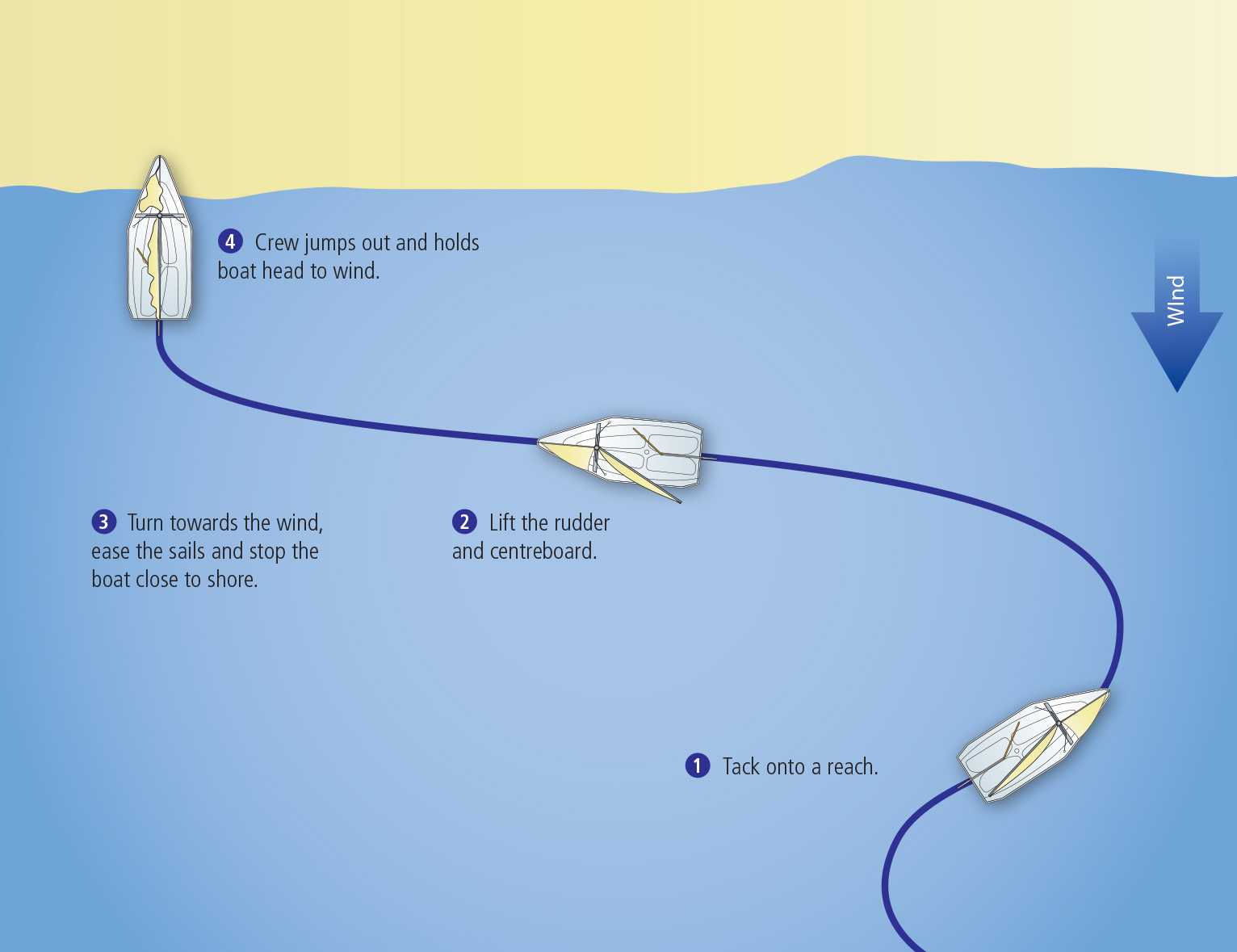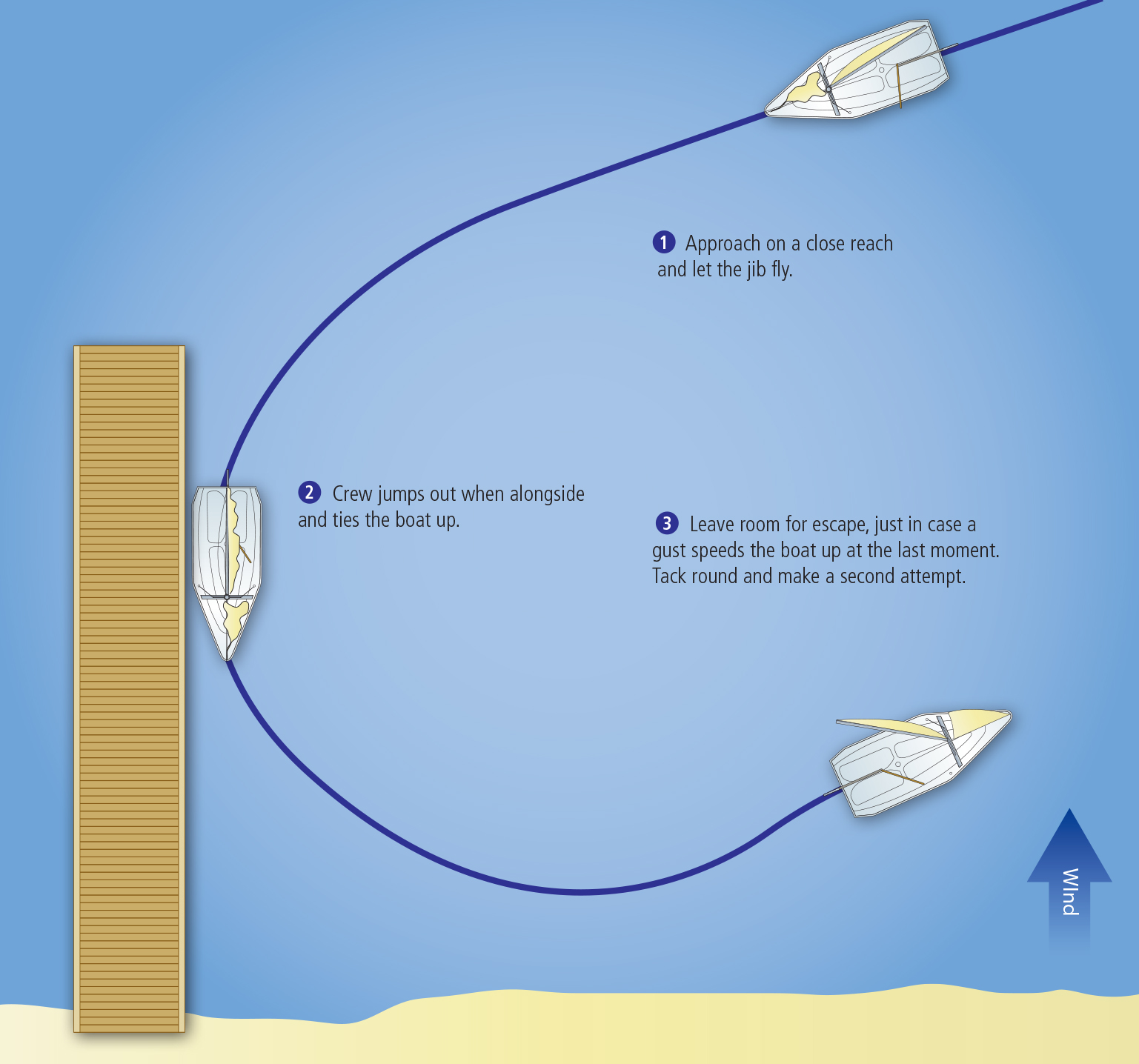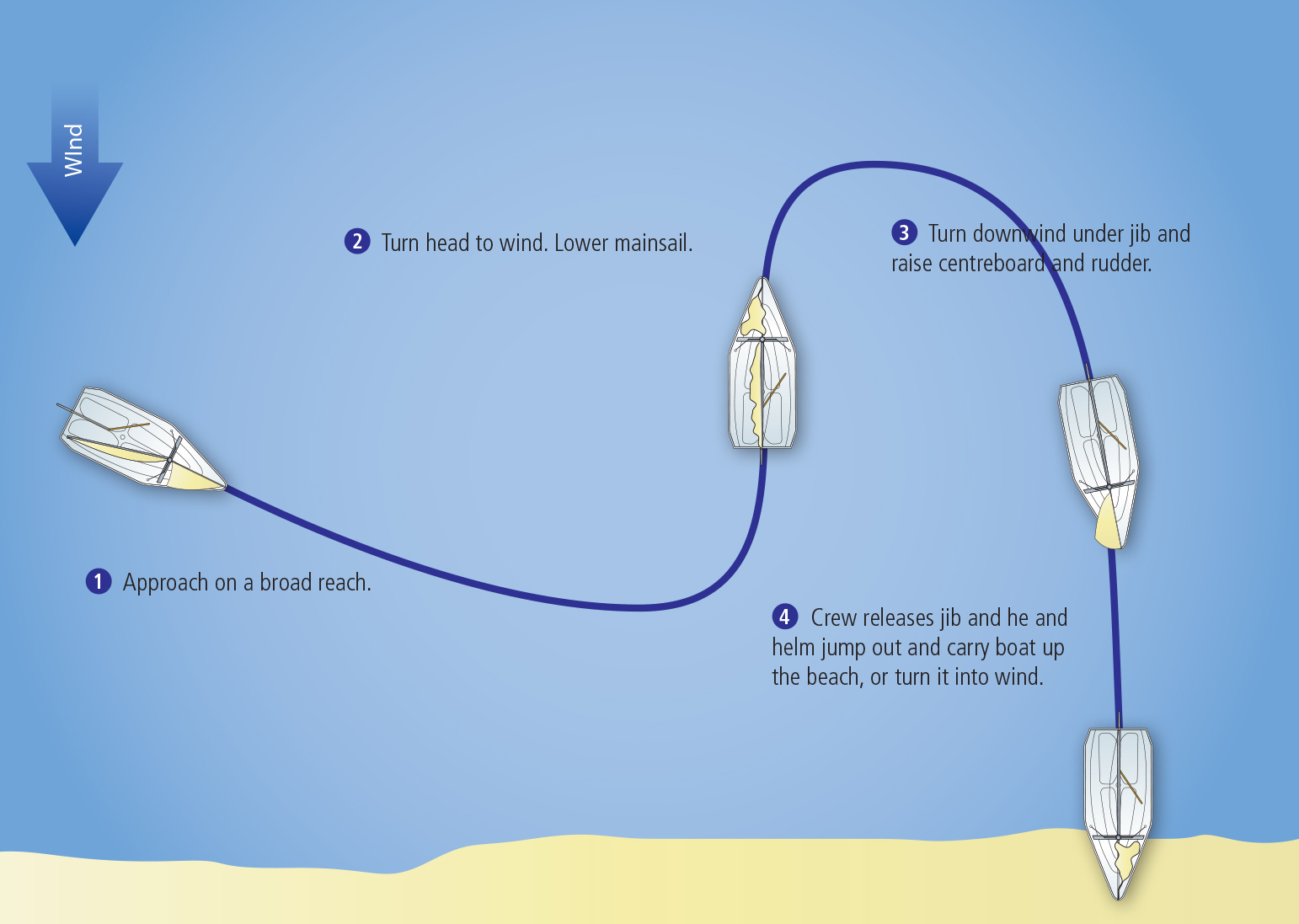Returning Your Dinghy To Shore
Book Extract
Returning to shore
Plan your windward course back to the beach, bank or slipway and make sure the crew fully understands – because it is their job to jump out and hold the boat.
- After the final tack, helm raises the rudder or releases the elasticated downhaul.
- Helm turns the boat head to wind and crew raises the centreboard.
- As boat reaches the shallows, crew jumps out just aft of the windward shroud and holds the bows into wind.
- Put the boat on its trolley and pull up the beach before lowering sails.

Alongside a pontoon
The key is to make your approach slowly by letting out the sails in good time – and plan an escape route just in case you don’t!
- Approach on a close reach.
- Release the sails to slow the boat down in good time.
- Turn head to wind and come alongside.
- Crew has the painter (bow rope) ready and keeps fingers clear of the gunwale.
- When the boat stops, crew disembarks to tie the boat up and helm lowers the sails.
- If you overshoot, use the boatspeed to tack round and make the attempt again.

Lee shoreline
If the weather is poor, and you are inexperienced, avoid beaching on a lee shore. Find somewhere safer to land. Beginners should only attempt this in calm weather. If conditions allow, the cautious way is to:
- Turn up into wind some way offshore, clear of the breaking waves, and take the mainsail down.
- Turn back downwind under jib alone.
- At the last moment the helm raises the rudder or releases the elasticated downhaul.
- As the boat reaches shallow enough water, for the crew to stand, they jump out and hold the boat.
- If the waters are calm, the boat can be put on its trolley. If not, then drag the boat up clear of the water, and turn it into wind, then lower the sails.
Tip
Practise in clear water away from the area you want to stop. Point the boat in the direction you must stop and let all the sails out. If the mainsail flaps, you can keep it up. If it fills, then take it down before making your final approach.

When the pontoon is broadside to the wind:
- Turn up into wind some way offshore, and take the mainsail down.
- Turn back downwind under jib alone.
- As helm turns to approach the pontoon, crew releases the jibsheet.
- Allow the boat to drift in on the wind.
- Crew has the painter (bow rope) ready and keeps fingers clear of the gunwale.
- When the boat stops, crew disembarks to tie the boat up and helms lowers the jib.
When you have no halyard
In some boats, like the Laser and Topper, the sail is sleeved over the mast and there is no halyard. In this case you cannot lower the mainsail as has been described above. In this case:
- Turn up into the wind and undo the mainsheet from the boom.
- Turn back downwind and, because the boat does not have shrouds, the sail and boom will blow forwards and you will approach the shore/pontoon slowly.
- If sailing to the shore, raise the rudder and centreboard as you approach.

Turn up into the wind and undo the mainsheet from the boom.

Turn downwind and sail in slowly with the sail and boom blowing forwards.
© Not to be reproduced without written permission from Fernhurst Books Limited.
Dinghy Sailing Start To Finish is written by Barry Pickthall. Barry Pickthall is a respected sports writer and photographer and has been covering all aspects of sailing and boating for the past 35 years, 20 of them as a yachting correspondent to The Times newspaper. He has been covering the international stage for the past 4 decades from the Olympics to America's Cup and Round the World Races. Barry is also a qualified sailing instructor – having graduated from one of the first courses held at the UKSA.